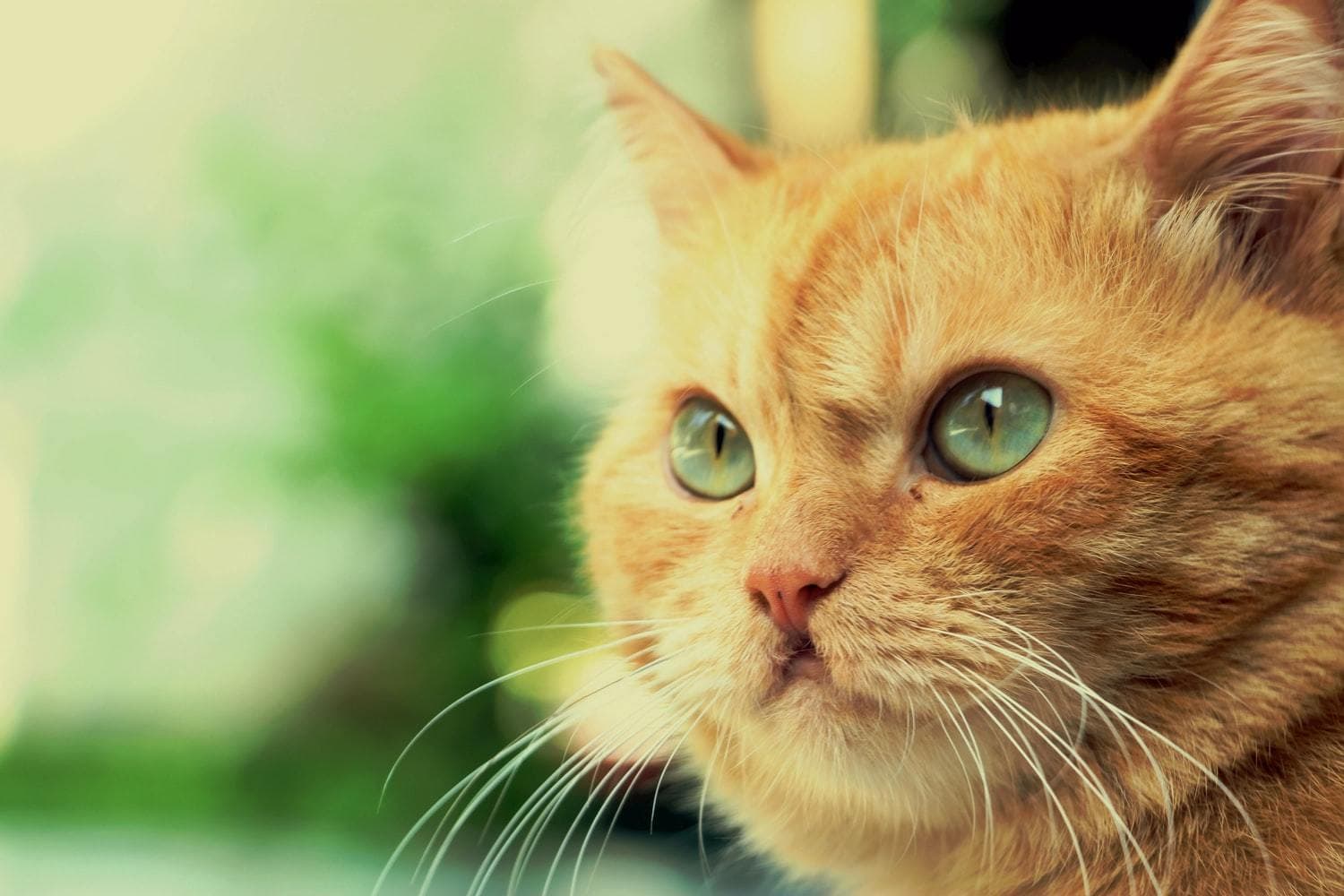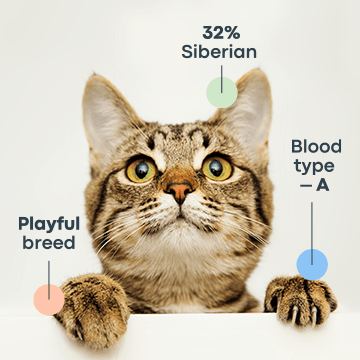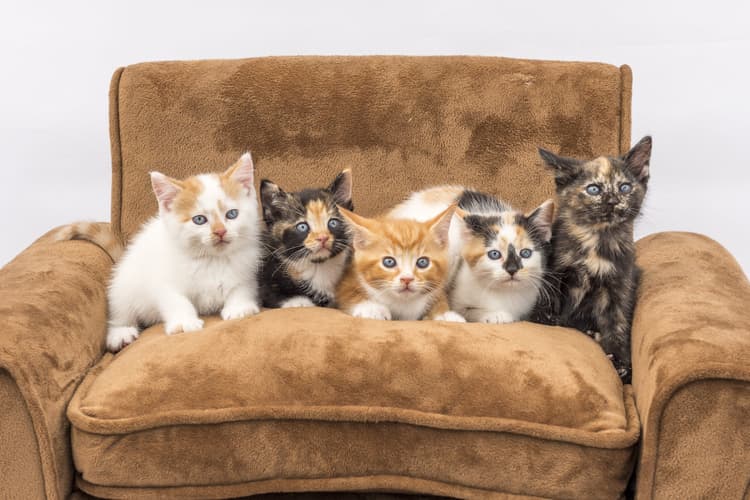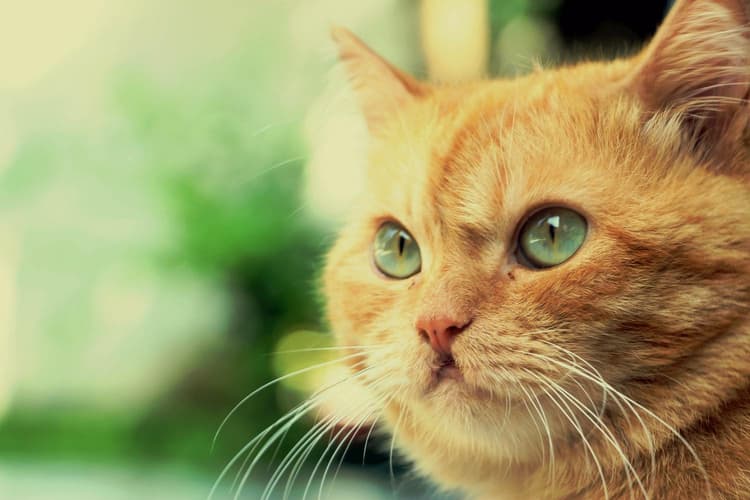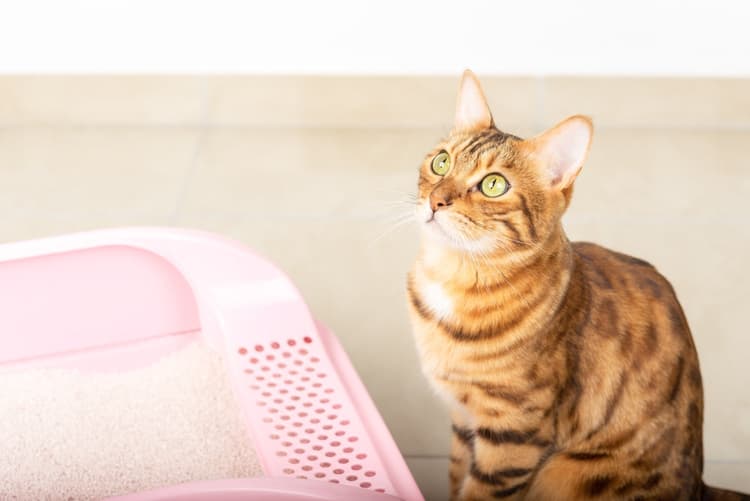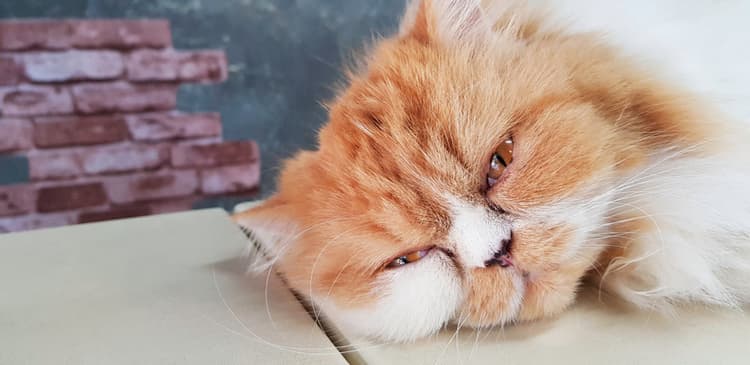Cats may seem independent and resilient, but like all pets, they’re susceptible to a range of diseases that can affect their health and quality of life. This article highlights some of the most common cat diseases, their key symptoms, and ways to keep your feline healthy and happy through proper care and early prevention.
Cat Diseases and Symptoms
Cats can develop a variety of health problems throughout their lives. Some of the most common feline diseases include kidney disease, dental problems, respiratory infections, diabetes, tumors, and obesity. Each condition affects the body differently, so symptoms can vary depending on the underlying issue.
However, there are several general warning signs that may indicate your cat isn’t feeling well. These include:
Lethargy or decreased activity
Loss of appetite or weight changes
Vomiting or diarrhea
Respiratory issues such as sneezing, coughing, or labored breathing
Skin or coat changes, including itching, bald patches, lumps, or redness
Behavioral changes, such as hiding, aggression, or excessive grooming
If you notice any of these symptoms, it’s important to schedule a veterinary check-up as soon as possible. Early diagnosis can make a significant difference in treatment success and your cat’s long-term well-being.
Common Cat Diseases

1. Chronic Kidney Disease (CKD)
Chronic kidney disease (CKD)—also known as renal insufficiency—is a progressive and irreversible loss of kidney function. It’s one of the most common chronic illnesses in cats, especially seniors, although it can develop at any age.
Healthy kidneys filter waste products from the blood and help maintain proper hydration and electrolyte balance. When the kidneys begin to fail, toxins build up in the body, leading to noticeable changes in your cat’s behavior and overall health.
Common symptoms include:
Increased thirst and urination
Weight loss and decreased appetite
Vomiting or nausea
Dull coat or poor grooming habits
Lethargy or weakness
While CKD cannot be cured, early diagnosis and long-term management can greatly improve quality of life. According to PetMD, cats diagnosed early often benefit from:
A specialized kidney-friendly diet that’s lower in protein and phosphorus
Frequent veterinary checkups and blood work to monitor kidney values
Hydration support, such as subcutaneous fluids when prescribed by a vet
With proper care, many cats with CKD can live comfortably for several years after diagnosis.
2. Feline Acne
Feline acne is a common skin condition that affects a cat’s chin and lower lip area. It occurs when hair follicles become clogged with excess keratin—a natural skin protein—leading to blackheads, red bumps, and pimple-like lesions. You might notice small, rough spots or dark specks that resemble dirt on your cat’s chin.
Common symptoms include:
Small bumps or pustules on the chin or around the mouth
Redness, swelling, or irritation
Itching or sensitivity
Hair loss in the affected area (in chronic cases)
In most cases, feline acne is mild and manageable, but if left untreated, it can become infected and painful. Regular cleaning of the chin area with vet-approved antiseptic wipes or medicated shampoos can help prevent flare-ups. For more severe or recurring cases, your veterinarian may recommend topical or oral antibiotics, antibacterial ointments, or dietary adjustments if allergies are suspected.
3. Diabetes Mellitus
Diabetes mellitus is a common hormonal disorder in cats, similar to diabetes in humans. It occurs when the body either doesn’t produce enough insulin or cannot effectively use the insulin it does produce. Insulin is essential for regulating blood sugar levels and allowing the body’s cells to use glucose for energy.
The most common type seen in cats is Type II diabetes mellitus, also known as insulin-resistant or non–insulin-dependent diabetes. This form develops when the body’s cells become resistant to insulin, causing glucose to build up in the bloodstream.
Common symptoms include:
Increased thirst and urination
Excessive appetite
Weight loss despite eating well
Lethargy or general weakness
A dull coat or decreased grooming
Overweight and obese cats—especially those weighing over 9 pounds (about 4 kg)—are at a much higher risk of developing diabetes. Male cats and older cats are also more prone to the condition.
With proper management, diabetic cats can live long, comfortable lives. Treatment typically includes insulin therapy, a strictly controlled diet, regular exercise, and routine vet monitoring to maintain stable blood sugar levels.
4. Eosinophilic Granuloma Complex (EGC)
Eosinophilic Granuloma Complex (EGC) is a term used to describe three types of skin lesions in cats: eosinophilic plaques, eosinophilic granulomas, and indolent ulcers. The name comes from eosinophils, a type of white blood cell involved in allergic and immune responses.
Common signs of EGC include:
Ulcers or sores on the lips
Red, raised patches on the skin (plaques)
Granulomas that may suddenly appear in the mouth, especially along the gums and palate
Itching or discomfort in affected areas
EGC can be triggered by a variety of factors, including allergies, hypersensitivity reactions, flea or insect bites, genetic predisposition, and certain food allergies.
Treatment depends on the severity and underlying cause. Mild cases may respond to topical treatments, corticosteroids, or antihistamines, while severe or recurring cases may require more extensive allergy testing, immunosuppressive medications, or dietary management. Regular monitoring and prompt veterinary care are essential to prevent lesions from worsening or becoming infected.
5. Feline Immunodeficiency Virus (FIV)
Feline Immunodeficiency Virus (FIV) is a viral infection that gradually weakens a cat’s immune system, making them more susceptible to other illnesses and infections.
According to ASPCA, the key points about FIV:
Infected cats may show no symptoms for years after exposure.
Over time, the weakened immune system can lead to secondary infections, poor coat condition, weight loss, or chronic illnesses.
The virus is primarily spread through deep bite wounds, so outdoor and unneutered male cats are at higher risk.
While FIV can shorten a cat’s lifespan, many FIV-positive cats live comfortably for years with proper care. Indoor living, routine veterinary checkups, a balanced diet, and prompt treatment of infections can significantly improve quality of life.
Note: There is currently no cure for FIV, but cats with the virus can thrive with careful management.
6. Feline Infectious Peritonitis (FIP)
Feline Infectious Peritonitis (FIP) is a serious, life-threatening disease caused by a mutated feline coronavirus. The mutation triggers an overactive immune response, which can damage organs and tissues, leading to severe illness.
Key facts about FIP:
Most commonly affects young cats under 2 years of age.
Higher-risk groups include purebred cats, males, and cats living in multi-cat households, shelters, or catteries.
Symptoms may include:
Weight loss and poor appetite
Lethargy and depression
Fever that does not respond to antibiotics
Fluid accumulation in the abdomen or chest, causing swelling and difficulty breathing
FIP is usually fatal, though recent advances in antiviral therapies have shown promise in some cases. Early detection is difficult, so preventive measures, such as reducing stress, maintaining good hygiene in multi-cat environments, and regular veterinary care, are crucial.
7. Feline Leukemia Virus (FeLV)
Feline Leukemia Virus (FeLV) is one of the most common viral infections in cats and can significantly impact their health. The virus is spread through close contact with infected cats, including bite wounds, mutual grooming, and sharing food bowls or litter boxes.
Common symptoms of FeLV include:
Weight loss and poor appetite
Recurrent infections
Anemia or pale gums
Lethargy and decreased activity
Cats infected with FeLV are also at higher risk for cancer, blood disorders, and secondary infections due to a weakened immune system.
The good news is that FeLV is preventable through vaccination, especially for cats at risk of exposure, such as outdoor cats or those living with other cats. Regular veterinary checkups and early testing are essential for managing the health of both FeLV-positive and at-risk cats.
8. Feline Lower Urinary Tract Disease (FLUTD)
Feline Lower Urinary Tract Disease (FLUTD) is a term used to describe a group of common bladder and urethral problems in cats. It is particularly prevalent in middle-aged, overweight, and indoor cats, though any cat can develop it.
Common symptoms of FLUTD include:
Straining or difficulty urinating
Frequent trips to the litter box
Blood in the urine
Signs of discomfort, such as crying while urinating or licking the genital area
FLUTD can be painful and potentially life-threatening if a urinary blockage occurs, especially in male cats. Early veterinary intervention is crucial to relieve pain, prevent complications, and address underlying causes such as urinary stones, infections, or diet-related issues. Preventive measures include maintaining adequate hydration, a balanced diet, and regular veterinary checkups.
9. Feline Panleukopenia (Distemper)
Feline Panleukopenia virus, also known as feline distemper, is a highly contagious and potentially life-threatening parvovirus. It primarily affects kittens and unvaccinated cats.
The virus attacks rapidly dividing cells in the intestines, bone marrow, and lymph nodes, leading to a dangerous deficiency of white blood cells (panleukopenia).
Common symptoms include:
Vomiting and diarrhea
Lethargy and depression
Weight loss
Sudden death, particularly in kittens
Fortunately, feline panleukopenia is preventable through vaccination. Ensuring that cats, especially kittens, are properly vaccinated is the most effective way to protect them from this serious disease.
10. Fleas
Fleas are among the most common external parasites affecting cats (and dogs). They feed on blood, causing itching, irritation, and discomfort.
Beyond the nuisance, fleas can also transmit diseases to cats, including:
Tapeworm infections
Bartonella (cat scratch disease)
Rickettsia infections
Common signs of flea infestation include:
Excessive scratching or biting at the skin
Presence of flea dirt (tiny black specks on the coat)
Hair loss or irritated skin
Preventing flea infestations involves regular use of veterinarian-approved flea treatments, maintaining a clean living environment, and checking your cat for signs of fleas regularly. Early detection and treatment are key to avoiding complications and keeping your cat comfortable.

11. Hyperthyroidism
Hyperthyroidism occurs when a cat’s thyroid gland produces excess thyroid hormone, speeding up metabolism and affecting multiple organs. It is most commonly seen in middle-aged and senior cats.
Common symptoms include:
Weight loss despite an increased appetite
Vomiting or nausea
Hyperactivity or restlessness
Rapid heartbeat or increased respiration
Poor coat condition
If left untreated, hyperthyroidism can lead to serious complications, including heart disease and high blood pressure. Management typically involves medication, dietary changes, radioactive iodine therapy, or surgery, depending on the severity and the cat’s overall health. Early detection through routine veterinary checkups can help maintain a good quality of life.
12. Hypertrophic Cardiomyopathy (HCM)
Hypertrophic cardiomyopathy (HCM) is one of the most common heart diseases in cats. In this condition, the heart muscle of the left ventricle thickens, reducing the amount of blood that can fill the chamber. As a result, the heart’s ability to pump blood and oxygen efficiently is compromised, often causing the left atrium to enlarge due to the backlog of blood.
Common symptoms of HCM include:
Heart murmur detected by a veterinarian
Difficulty breathing or rapid respiration
Lethargy or decreased activity
Weakness or sudden collapse in severe cases
Cats with HCM are at risk of heart failure, fluid buildup in the lungs, or the formation of blood clots. Management may include medications to support heart function, reduce blood pressure, or prevent clot formation, as well as regular veterinary monitoring. Early detection can significantly improve a cat’s quality of life and help prevent life-threatening complications.
13. Inflammatory Bowel Disease (IBD)
Inflammatory Bowel Disease (IBD) is a chronic condition characterized by persistent inflammation of the gastrointestinal (GI) tract. The exact cause is often multifactorial, involving genetics, environmental and dietary factors, and abnormal immune responses.
Common symptoms include:
Vomiting and diarrhea
Weight loss or poor body condition
Changes in appetite
Abdominal pain or bloating
Flatulence or increased gas
IBD primarily affects middle-aged and older cats. Because it is a long-term condition, ongoing management is essential. Treatment typically involves dietary adjustments, medications to reduce inflammation, and sometimes probiotics or supplements to support digestive health. Regular veterinary monitoring helps manage symptoms and maintain your cat’s quality of life.
14. Intestinal Parasites
Intestinal parasites are common in cats and include roundworms, hookworms, tapeworms, and protozoans such as coccidia and Giardia. These parasites can infect cats of all ages and, in some cases, may also pose a risk to humans.
Common symptoms include:
Diarrhea or vomiting
Weight loss or poor growth
Dull or rough coat
Scooting or visible worms in feces
Some cats may show no noticeable symptoms, making regular fecal exams and preventive deworming important. Treatment typically involves veterinary-prescribed deworming medications and maintaining good hygiene to prevent reinfection.
15. Lymphoma
Lymphoma is a type of cancer affecting the lymphatic system and is one of the most common cancers in cats. It is often aggressive and occurs more frequently in cats infected with Feline Leukemia Virus (FeLV) or Feline Immunodeficiency Virus (FIV).
Key facts about lymphoma:
It can develop in various parts of the body, but gastrointestinal (alimentary) lymphoma is the most common in cats.
Other affected areas can include lymph nodes, the mediastinum (chest), and extranodal sites like the skin or kidneys.
Common symptoms include:
Loss of appetite
Weight loss
Vomiting or diarrhea
Lethargy or decreased activity
Treatment and prognosis depend on the type and location of lymphoma, as well as the cat’s overall health. Chemotherapy, supportive care, and close veterinary monitoring are the mainstays of management, and early detection can improve quality of life.
16. Mammary Tumors
Mammary tumors are a form of breast cancer in cats. According to VCA Animal Hospitals, 80–96% of mammary tumors in cats are malignant, making early detection crucial.
Common signs include:
One or more palpable masses beneath the skin
Tumors located within the nipple or along the mammary chain
Occasionally, ulceration or discharge from the nipple
Mammary tumors are more common in unspayed female cats, and the risk increases with age. Spaying cats at an early age significantly reduces the likelihood of developing these tumors. Treatment typically involves surgical removal, sometimes combined with chemotherapy, depending on the tumor’s size, location, and malignancy. Regular veterinary exams and early detection are essential for the best outcomes.
17. Mast Cell Tumor
Mast cell tumors are the second most common skin tumors in cats. They are usually found on the head and neck and can vary in size and appearance.
Common signs include:
Firm, raised nodules
Hairless patches over the tumor
Occasional redness or irritation around the affected area
Treatment typically involves surgical removal of the tumor. Early detection and veterinary evaluation are important to ensure complete removal and to monitor for any recurrence. In some cases, additional therapies such as chemotherapy may be recommended depending on the tumor’s behavior.
18. Obesity
Obesity is a condition of excess body weight and is one of the most common cat diseases. Studies indicate that nearly 60% of cats are classified as overweight or obese.
Common signs include:
Difficulty jumping or moving comfortably
Decreased activity or lethargy
Excess fat around the abdomen or ribs
Obesity increases the risk of diabetes, arthritis, heart disease, and other chronic conditions. Prevention and management involve providing a balanced diet, controlling portion sizes, encouraging regular exercise, and monitoring weight regularly. Early intervention is key to maintaining your cat’s health and quality of life.
19. Osteoarthritis
Osteoarthritis is a common, progressive joint condition in cats that leads to pain, inflammation, and reduced mobility, particularly in senior cats.
Common signs include:
Reluctance to jump or climb
Stiffness or limping
Decreased activity and more sleeping
Difficulty grooming or using the litter box
Osteoarthritis can significantly affect a cat’s quality of life. Management typically includes weight control, joint supplements, pain relief medications, and environmental modifications such as ramps or padded resting areas. Early detection and veterinary guidance can help maintain mobility and comfort.

20. Pancreatitis
Pancreatitis is the inflammation of the pancreas in cats. It occurs when digestive enzymes are activated prematurely, causing the pancreas to begin digesting itself.
Common symptoms include:
Lethargy and weakness
Vomiting
Poor appetite or weight loss
Abdominal pain in some cases
Pancreatitis can be acute or chronic, and chronic cases are often associated with other conditions such as diabetes or inflammatory bowel disease. Treatment typically involves supportive care, fluid therapy, dietary management, and medications to control pain and inflammation. Early detection and veterinary management are key to preventing complications and maintaining quality of life.
21. Periodontal Disease
Periodontal disease is the inflammation and infection of the tissues surrounding the teeth in cats. It is typically caused by plaque and tartar buildup, which irritates the gums and can eventually lead to tooth and bone loss.
Key facts:
Studies show that 50–90% of cats older than 4 years experience some form of dental disease.
Many cats do not show obvious symptoms until the disease becomes painful.
Common signs include:
Bad breath or drooling
Oral pain or reluctance to eat
Dropping food or being hesitant to chew hard food
Bleeding gums
Management and prevention involve regular dental checkups, professional cleanings, daily tooth brushing, and dental-friendly diets or treats. Early intervention can help prevent severe oral disease and maintain overall health.
22. Pyometra
Pyometra is a serious uterine infection that occurs in unspayed female cats. It typically develops within six weeks after the last heat cycle and can become life-threatening if untreated.
Common symptoms include:
Lethargy and weakness
Fever
Vaginal discharge (may be pus-like or bloody)
Vomiting
Abdominal pain or swelling
Pyometra requires emergency veterinary care, and surgical removal of the infected uterus (spay surgery) is usually the recommended treatment. Early detection and prompt intervention are critical to save the cat’s life.
23. Squamous Cell Carcinoma (SCC)
Squamous Cell Carcinoma (SCC) is one of the most common skin and oral cancers in cats. It occurs when squamous cells divide rapidly and abnormally, forming tumors that may initially resemble scabs or sores.
Key facts:
SCC often develops in sparsely haired or lightly pigmented areas, such as the tips of the ears, nose, or eyelids.
Exposure to ultraviolet (UV) light is a known risk factor.
Tumors may appear anywhere on the skin or in the mouth.
Common signs include:
Visible sores, scabs, or lumps that do not heal
Redness or ulceration at affected sites
Weight loss or difficulty eating if oral tumors are present
Treatment typically involves surgical removal of the tumor. Early detection is crucial to prevent spread and improve outcomes. In some cases, radiation or chemotherapy may be recommended depending on tumor location and severity.
24. Upper Respiratory Infection (URI)
Upper respiratory infections (URI) are viral or bacterial infections that affect a cat’s nose, throat, and sinuses. They are among the most common cat illnesses and are highly contagious, especially in crowded environments such as shelters or multi-cat households.
Key facts:
Feline calicivirus and feline herpesvirus are responsible for 80–90% of all contagious URIs.
Cats in shelters, catteries, or with close contact to other cats are at higher risk.
Common symptoms include:
Sneezing and coughing
Nasal or eye discharge
Loss of appetite
Lethargy or decreased activity
Treatment usually involves supportive care, such as hydration, nutritional support, and sometimes antiviral or antibiotic therapy if secondary bacterial infections occur. Vaccination can help prevent common viral causes and reduce the severity of this cat sickness.

25. Urethral Obstruction
Urethral obstruction is a life-threatening blockage of urine flow in cats and can become fatal within 24–48 hours if not treated promptly. It is most common in overweight male cats.
Causes may include:
Urinary stones (uroliths)
Mucus plugs
Swelling or inflammation of the urethra
Urethral strictures or spasms
Cancer
Common symptoms include:
Straining or vocalizing while urinating
Loss of appetite
Lethargy or weakness
Abdominal pain or swelling
Collapse in severe cases
Treatment is an emergency and typically involves relieving the blockage via catheterization, fluid therapy, and supportive care. Identifying and addressing the underlying cause is critical to prevent recurrence. Early veterinary intervention is essential to save the cat’s life.
Deadly Cat Diseases and Symptoms
Disease | Key Symptoms | At-Risk Cats | Prevention / Management |
Feline Leukemia Virus (FeLV) | Weight loss, infections, anemia, higher cancer risk | Cats in close contact with infected cats, outdoor cats | Vaccination, indoor lifestyle, regular vet checkups |
Feline Immunodeficiency Virus (FIV) | Often asymptomatic initially; secondary infections later | Outdoor cats, cats exposed to bites from FIV+ cats | Keep cats indoors, test and segregate infected cats |
Feline Infectious Peritonitis (FIP) | Weight loss, lethargy, fever, abdominal or chest fluid | Young cats <2 years, purebred, multi-cat households | No full prevention; reduce stress and overcrowding, early veterinary care |
Feline Panleukopenia (Distemper) | Vomiting, diarrhea, lethargy, sudden death in kittens | Kittens, unvaccinated cats | Vaccination, hygiene, isolation of infected cats |
Lymphoma | Appetite loss, weight loss, GI issues, lethargy | Cats with FeLV or FIV, older cats | Early detection, chemotherapy, supportive care |
Mammary Tumors | Palpable masses under the skin, sometimes nipple discharge | Unspayed female cats | Early spaying, surgical removal, regular vet exams |
Squamous Cell Carcinoma (SCC) | Scabs, sores, hairless patches, oral tumors | Light-pigmented cats, UV exposure | Limit sun exposure, surgical removal, early detection |
Urethral Obstruction | Straining to urinate, vocalizing, lethargy, collapse, abdominal pain | Overweight male cats | Emergency veterinary care, catheterization, diet and weight management |
Pancreatitis | Lethargy, vomiting, poor appetite, abdominal pain | Older cats, cats with diabetes | Early detection, supportive care, dietary management |
Hypertrophic Cardiomyopathy (HCM) | Heart murmur, difficulty breathing, lethargy | Middle-aged to older cats, certain breeds | Regular veterinary checkups, medications if needed |
What Diseases Do Cats Carry to Humans?

Disease | Cause | Transmission | Symptoms in Humans | Prevention |
Toxoplasmosis | Toxoplasma gondii (parasite) | Contact with cat feces, contaminated soil | Flu-like symptoms, fatigue; dangerous for pregnant women | Wear gloves when handling litter, wash hands, keep cats indoors, avoid raw meat |
Cat Scratch Disease (CSD) | Bartonella henselae (bacteria) | Scratches or bites | Swollen lymph nodes, fever, fatigue, headache | Avoid rough play, clean wounds immediately, keep cats flea-free |
Ringworm (Dermatophytosis) | Fungal infection | Direct contact with infected cat or contaminated objects | Red, itchy circular rashes on skin | Wash hands after touching cats, clean bedding, treat infected cats promptly |
Salmonellosis | Salmonella bacteria | Contact with infected feces, raw food | Diarrhea, fever, abdominal cramps | Practice good hygiene, avoid raw feeding, clean litter boxes regularly |
Campylobacteriosis | Campylobacter bacteria | Contact with infected feces | Diarrhea, abdominal cramps, fever | Good litter hygiene, wash hands thoroughly |
Rabies | Rabies virus | Bite from infected cat | Fatal if untreated; neurological symptoms | Vaccinate cats, avoid stray cats, seek immediate care if bitten |
Ringworm | Fungal infection | Direct contact with infected cat or contaminated surfaces | Red, itchy, circular skin lesions | Treat infected cats, maintain hygiene |
Prevention and Cat Health Management
Cats are experts at hiding signs of illness, which is why preventive care is essential for their long-term health. Regular monitoring, proper hygiene, and routine veterinary care can help detect and prevent many cat diseases before they become serious.
Key preventive measures include:
Regular veterinary checkups and vaccinations: Take your cat to the vet at least once a year for exams and vaccines. Kittens, senior cats, or cats with chronic conditions may require more frequent visits. Vaccinations protect against serious illnesses like Feline Leukemia Virus (FeLV), Feline Panleukopenia (distemper), and rabies.
Parasite prevention: Use vet-recommended medications to protect your cat from external parasites like fleas and ticks, and internal parasites such as worms. Parasite prevention reduces the risk of discomfort, infections, and diseases that can be transmitted to humans.
Litter box hygiene: Keep litter boxes clean and scoop them daily. Wash your hands thoroughly after cleaning to prevent transmission of zoonotic diseases like Toxoplasmosis. Monitor your cat for unusual litter box behavior, which may indicate urinary tract problems or other health issues.
Fresh water and proper diet: Ensure your cat has access to clean water at all times and provide a balanced diet suitable for their age, weight, and health status. Proper nutrition supports immune function, digestion, and overall wellbeing.
Safe play and handling: Avoid rough play to reduce the risk of scratches or bites. Teach children how to interact gently with cats to prevent injuries and potential transmission of zoonotic infections.
Indoor safety: Keeping cats indoors can significantly reduce their exposure to infectious diseases, parasites, and accidents. Outdoor cats are more prone to contact with other animals, contaminated environments, and traffic accidents.
Behavioral monitoring: Pay attention to changes in your cat’s activity, appetite, or litter box habits. Early detection of unusual behaviors can help your vet identify health problems before they become serious.
Extra tip: Consider microchipping your cat. It’s a simple precaution that can help reunite you with your pet if they ever get lost.
What to Do If You Suspect Cat Diseases
If you think your cat may be sick, it’s important to act quickly and calmly. Start by carefully monitoring their symptoms, including changes in:
Appetite or water intake
Energy levels and activity
Litter box habits (urination or defecation changes)
Breathing or coughing
Behavior, such as hiding, aggression, or vocalization
Important: Never give your cat human medications, as many common drugs (like acetaminophen or ibuprofen) are toxic to cats and can be fatal.
Instead, contact your veterinarian immediately for guidance. Provide detailed notes on your cat’s symptoms, their duration, and any unusual behavior you’ve observed. This information helps your vet make an accurate assessment and start treatment quickly if needed.
While our friends can face a wide range of cat health issues—from infections and parasites to chronic conditions like diabetes, kidney disease, or cancer—the good news is that many cat diseases are manageable, treatable, and preventable. With vigilance, patience, and proper care, you can help your feline companion stay healthy, happy, and thriving for years to come.
In exploring the array of cat health issues, from infections and parasites to chronic conditions like diabetes

